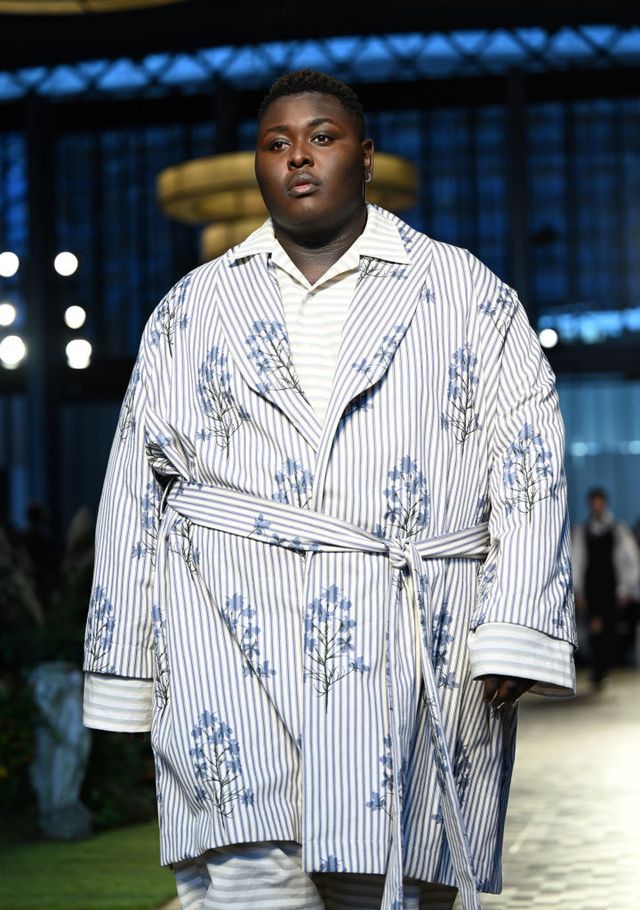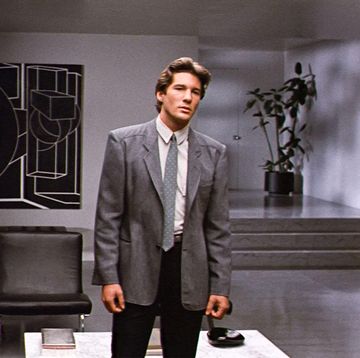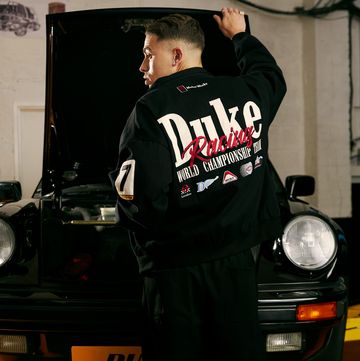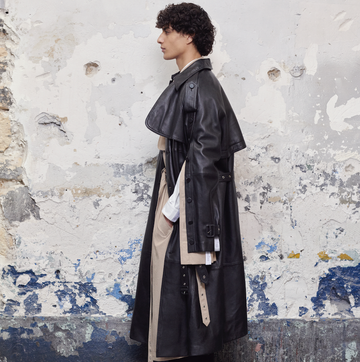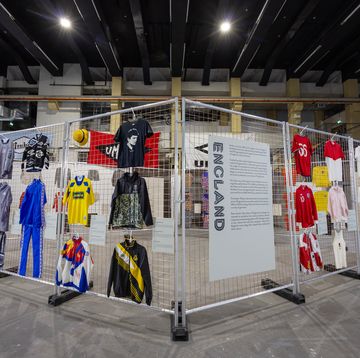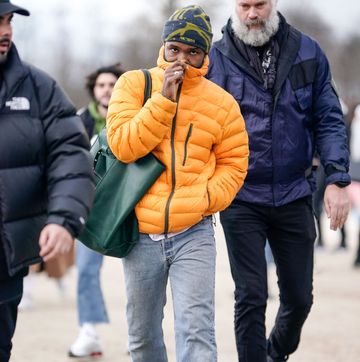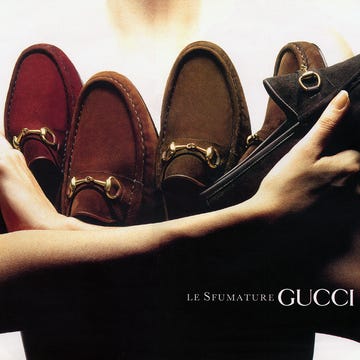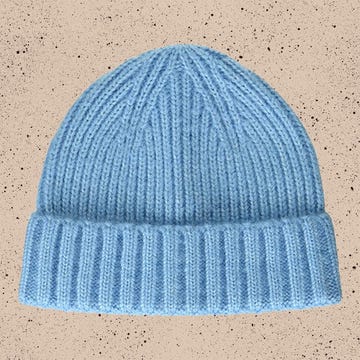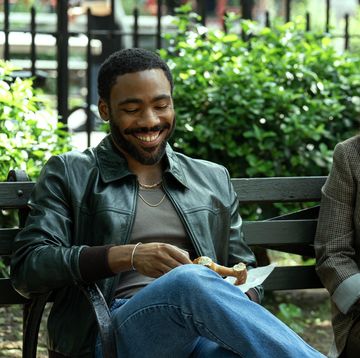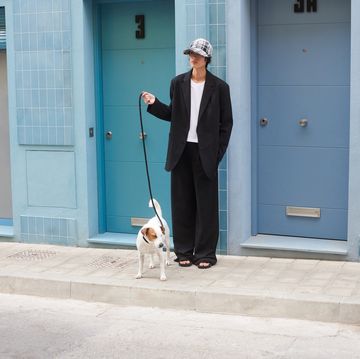Menswear has been slow to embrace size diversity on the runway. In fact, it’s been really slow. Vogue Business recently reported that over the last month of autumn/winter ‘23 shows, only eight out of 69 included at least one plus-size menswear model. And that's not even an improvement on the year before – autumn/winter ’22 offered the same amount that walked in January. The catwalks are awash with 28” inch waists and below, and for those who aren’t sample size or anywhere near it, the lack of body diversity sends a clear message: if you’re neither stick-thin nor ripped, the door is closed.
This probably won’t come as a shock; it’s not like the fashion industry has ranked highly for inclusivity, after all. The British Fashion Council's diversity report found that representation at the board, and direct report levels for women was below 40%, while ethnic minorities accounted for below 10%. But in a time where a brand’s misjudgements come at the risk of trial-by-Twitter, it’s questionable why more aren’t prepared to set a new precedent – even if simply for publicity, problematic as that might still be. There are plenty of men who fall into the size L (and above) category who have their wallets poised and ready for next season’s drop; so much so that by 2027, the global plus-size clothing market is predicted to be worth $696,712.1 million. Where, then, is their representation on the runway?
Followers of womenswear will know that size diversity has been put under the microscope over the last few years, and the growing dialogue has led to different body sizes being regularly cast. Lisa Dymph Megens, a casting director who’s worked on editorials, campaigns and shows for the likes of Gucci, Prada, COS and more, thinks one of the reasons why menswear is trailing behind is because of the lack of discourse on size diversity. “Why don't designers talk about this more? In womenswear, it's a more known conversation, but there's also a lot of pressure for men to look a certain way,” she continues. “Maybe brands even think, 'Oh, we don't have to show it because nobody's ever talking about it.”
Even if fashion houses won’t, there are influential figures who are happy to dispel the pro-thin stigma. Dino Bonačić is a fashion journalist, lecturer and handbag-obsessive, who dedicated a recent instalment of his newsletter Handbags At Dawn to how the industry’s problematic sizing led him to love a less fatphobic accessory. “It's a laughing and crying situation,” he said of not being able to slip into a pair of XL ERL trousers. “The feeling of not fitting into the largest available size is something that I've encountered a lot, especially when it comes to trousers made by emerging brands. Each time it happens, though, is a reminder of just how limiting the fashion offering can be, as it excludes a huge part of the population who wants to feel like they belong.” Layer that with the fact that many brands seem to approach sizing completely randomly, and you’ll find yourself completely lost about what dimensions actually define a size category. “I will literally be a size M in one pair of trousers and not fit into an XL of another pair. It's a wild, wild west out there.”
As is often the case when fashion week focuses on catering to the few, social media steps in with reels of relatable content. A few scrolls through your TikTok or Instagram video feeds (pick your poison) will acquaint you with unapologetic plus-size men showing that an #OOTD isn’t just reserved for the skinny. On the former, Drake Andrews regularly shares with his 194k followers the brands and pieces worth investing in for those up to a 6XL size. Daniel’s XL minimalist ‘fits prove that such an aesthetic isn’t just for slim Scandinavians. And on Instagram, Kyle Pretzlaff will take inspiration from the catwalk for his 2XL ensembles.
What unites them, despite their top-tier sartorial ensembles, is the multiple comments of support and gratitude for their posts. Dymph Megens had a similar experience after posting a fashion editorial where she’d cast a range of men’s bodies – from those with 0% fat to the realistic interpretation of a dad bod – explaining that she got “so many likes and comments, and people loved it.”
When there have been instances of size diversity on the catwalk, the response has also been positive. British, LVMH Prize-winning brand SS Daley featured four mid to plus-size models walk its spring/summer ’23 show. Critics praised Daley as one of the few designers, and the only menswear one, to show a range of bodies during the London Fashion Week shows. And if that isn’t enough tangible support, you can tell by the amount of ‘Coming soon to’ retailers listed on its website that the collection is just as much a financial success.
James Corbin is one of the plus-sized models that walked in his show. "It felt like the start of something new," he says of the event. "From the casting process, right down to walking the runway it felt so special. I love Steven and where he takes his designs. The experience was very unique and showed me the direction fashion should be going in – there was so much feedback on social media!"
So, what next? With a few gender-neutral shows in the calendar this month, we’ll have to wait and see. Last season saw the lowest amount of plus-size representation within womenswear since 2020 and TagWalk (a runway search engine) reported that there were -77% of "curvy models" at Milan Fashion Week as opposed to London. It sadly reaffirms what many had suspected; comparable bodies are a trend as replaceable as cargo pants.
But you could say that seeing plus-size male models on the runway is the first step in the right direction. While womenswear seems to be reverting back to '90s body ideals, maybe size-diversity will be taken more seriously within menswear; change could be slow because meaningful actions take time.
Charlie Clark-Perry, the founder of SUPA Model Management, is James' agent and a key figure in the fight to make the luxury landscape more inclusive. "It's extremely important to me to have size diversity in menswear, men need to be represented in all body shapes and sizes," he says. "I founded [the agency] in 2013 with that exact objective, for more diversity and inclusivity within the industry, however, with a focus not just on size, but representation across gender, race and disability too."
For Clark-Perry, it's about enforcing change in areas that you can. "If more model agencies represented more plus-size models or variations of different types of models, then there would be greater choice for brands, which will ultimately give them more options to include these models in their catwalk shows." Corbin's success is an example of what an agency's support and an intention to make change (Corbin is as much a spokesperson for size inclusivity as he is a model) can achieve, having also appeared in editorials for Vogue Italia, DAZED and Perfect Magazine as well as more catwalk appearances. Does Clark-Perry think that menswear is changing? "Slowly; little by little," he shares. "But it’s extremely small progress compared to womenswear, even with this season seeming to take a step backwards."
While talking about his latest shopping ordeal, Bonačić said, “I guess thick thighs, a big ass and a pot belly aren't en vogue?” Quite, but that might not be a bad thing. You can't make a body-size a trend, because that's as damaging as repeatedly showing one type of silhouette. The plus-size body is more than a marketing ploy, after all; it should be just as much the norm as a late-running show. And we're getting there. Slowly.
